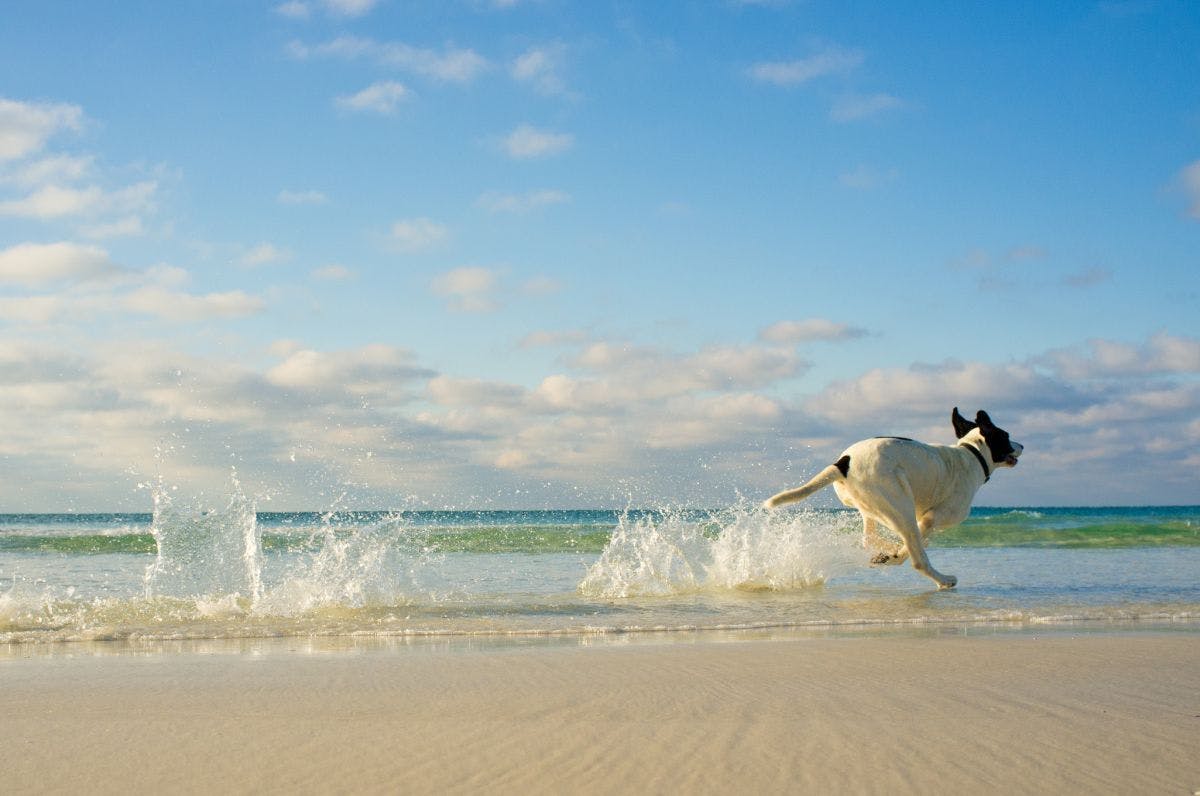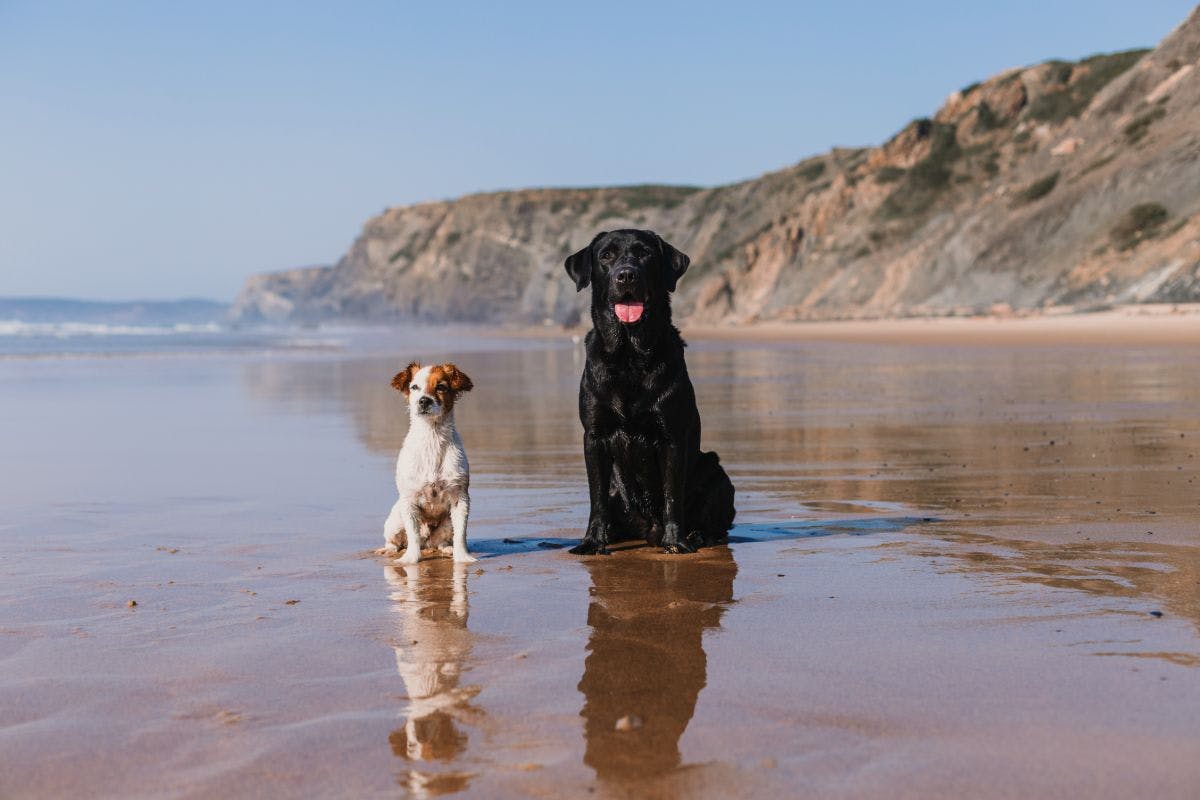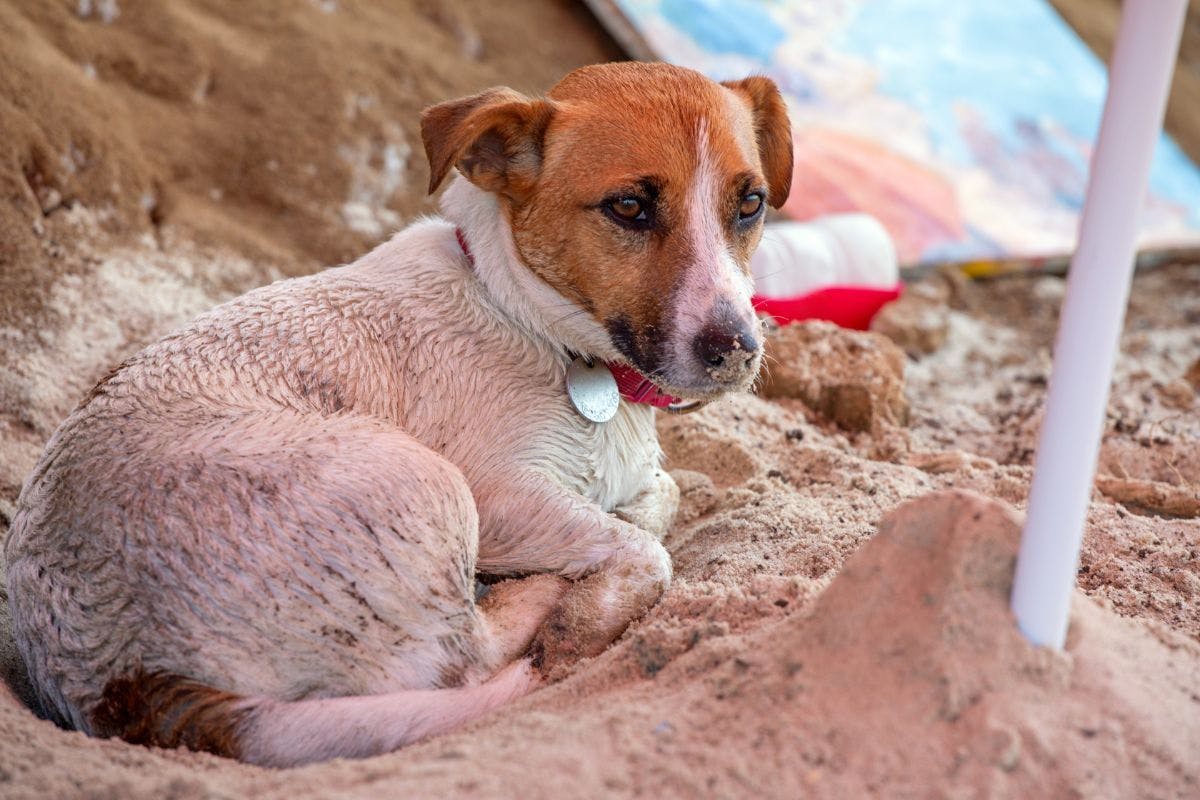
On those long days and warm nights, there’s nothing better than seeing happy dogs at the beach. Many dogs love a trip to the beach, but it’s always important to be fully prepared and have safety top of mind. There are many unfamiliar sights, sounds and smells for your dog to explore, and you want to ensure you make it a positive experience for all.
We tackle everything you should consider when bringing your best mate to the sand hills and salty water.
Can I bring my dog to the beach?
Naturally, it’s essential to know if you can legally bring your dog to the beach without breaking any rules. Unfortunately, our canine family members aren’t always welcome everywhere we go (we wish it were so). However, we’re lucky enough to have some great beaches across New Zealand marked as dog friendly.
We all know seeing dogs at the beach is positively heart-warming, but you should always triple check the rules and guidelines of your chosen destination. You can find out the regulations in your local area by checking council websites, as some beaches have on and off-leash days and times.
Some of the most popular dog beaches around New Zealand include (and definitely not limited to):
- Mangawhai Heads Beach - Mangawhai
- Takapuna Beach - Auckland
- Bethells Beach - Auckland
- Piha Beach - Auckland
- Mt Maunganui Beach – Tauranga
- TeAwanga - Hastings
- Lyall Bay - Wellington
- Golden Bay – Nelson
- Bottle Lake Forest Park - Christchurch
- Ocean Beach Domain - Dunedin
On-leash vs off-leash – Always ensure you check whether the stretch of sand you pick is regulated as an on-leash or off-leash area, as some beaches can be both, depending on exact points on the shore.
Dog socialisation at the beach

Taking your dog to the beach without running into other four-legged friends is a rarity, so it’s critical you understand your dog’s behaviour and willingness to share their surroundings.
Some dogs are play-driven, some dogs stick to your leg everywhere you go, and others are fixated on their ball – dogs, like humans, have their preferences.
So, how can you ensure your beach day runs smoothly when your dog is playing and socialising with other pups? We asked dog trainer and behaviourist Lara Shannon some of her tips on safe socialisation for dogs at the beach.
Ensuring your dog has a solid recall under high distraction is something all dog owners should be working on regardless of whether they are at the beach. However, it's even more important at the beach as your dog could potentially go running into the water, swim out and potentially find themselves in trouble.
If your dog is not reliably coming back to you, I wouldn't recommend off-leash beach visits. Consider working on this with a professional trainer if you’re having some trouble, as it could save your dog's life.
My advice for taking your dog to any off-leash area is that you should have a basic understanding of dog play styles and what your dog likes to do when they’re around other dogs in an off-leash situation.
The good signs to look for include a ‘play bow’ from a dog inviting your dog to play and vice versa, mimicking each other’s behaviour and taking turns when playing. Another good sign is to see both dogs stop and shake themselves off when they’ve been playing a bit rough.
Be extra careful if there are small and large dogs playing together as the risk can be much higher, especially when they are playing in the shallows of the water. Dogs should not be trying to catch and play with another dog while swimming at all.
Dogs can get into trouble, just as we can, very quickly in water. If we humans get in trouble and find ourselves out too deep, we can raise our hands, wave for help and tread water until someone comes to our rescue. On the other hand, dogs will keep on swimming until they can’t any longer and may even swim away from you if they panic. This is a key reason why recall and keeping them within a safe distance is vital.
It sounds simple, but things can go from completely fine to dangerous very quickly when water is involved, so it’s always crucial to keep your eyes on your dog. I advise people to stay off their phones and not talk to other owners without keeping concentration on their dogs, even at the dog park. So, this is even more important at the beach or near the water.
- Make sure you have bullet-proof recall with your dog
- Understand dog body language and play styles
- Don’t let your dogs play in the water
- Be cautious about how far your dog swims out
- Keep your eyes firmly on your dog
What should I bring to the beach for my dog?
Ready to let your dog hit the sun, sand and water? Just hold up, and make sure you have everything you need to make dog safety at the beach your number one priority. And fun, did we mention wagging tails and zoomies?
Here’s a quick checklist of the priority items to pack in your car or bag before your take your dog to the beach:
- Sunscreen – while not every dog will have the same risk of getting sunburnt, dogs can be affected by sun exposure on areas of the skin sparsely covered with fur. Also, think about pink areas of the skin, as this can be of particular risk.
- Fresh water and collapsible bowls – having an adequate amount of fresh water is really important for your dog at the beach, especially if they are active during their visit. Saltwater is not healthy for your dog to drink, so you’ll need to make fresh water readily available.
- Poo bags – cleaning up after your beach visit is just as important as the good times. Make sure you’ve got plenty of bags handy.
- Lead and collar (with ID tag) – the must-have essentials for any dog adventure. Being able to control your dog at the beach is a non-negotiable and ensuring they’re easily identified is important.
- Towels - keep your dog warm, dry and comfortable after their big day. Just like humans, the cold can affect your dog’s health if their body temperature drops too low.
And don’t forget your dog travel essentials:
- Car seatbelt
- Car seat protector
- Dog harness
- Water bottle and bowls
Harmful or dangerous elements at the beach

While it’s no fun to talk about, dogs at the beach can be at risk of harm. An environment full of off-leash dogs, water and weather changes means there’s a lot to look out for when you’ve got your best friend by your side.
We spoke to PETstock VET, Dr Sasha Nefedova, about dog safety at the beach to outline some of the most common threats.
Jellyfish
One of the more common threats to dogs – and humans at the beach. Dogs can be stung by jellyfish by stepping on them or biting them, usually out of curiosity. Jellyfish stings can cause local pain and swelling, but poisonous jellyfish stings can cause swelling of the head and face, wobbliness, hives, drooling and anaphylactic reactions. *If you notice any of these signs, you should immediately take your dog to a vet.
Foreign Objects
It’s not just other live creatures which can cause an issue for your dog at the beach, it’s also man-made threats, like baits and other objects lying around. Many dogs are inclined to chew or swallow things like bait or fishhooks because they smell enticing. In some cases, this can cause diarrhoea and vomiting. In more severe cases, you might find the object requires surgical removal.
Sunburn
Like us, pets are susceptible to skin cancer. With the exposed landscape of the beach, UV rays are constant and can be a threat to your dog at the beach. Some dogs are more susceptible than others, depending on their coat and skin exposure, but they can be easily protected from the sun, just like humans. There is such thing as sunscreen for animals, and it should be applied to sparsely haired regions of your dog’s body, such as their belly and noses (if they’re pink).
Salt Water Ingestion
While not one of the most harmful threats/occurrences at the beach, some dogs will drink salt water at the beach. Whether it’s accidentally, incidentally, or intentionally, it can become an issue for some dogs. Like for most people, salt water isn’t pleasant on the tongue for a dog either, but it can also cause sickness too. Some of the symptoms include vomiting, bloat – or if they just seem ‘off’. Make sure you try to steer your dog to some fresh water if they’re determined to drink the salty beach water – they might be really thirsty!
Heat Stroke
Heat stroke is another risk to your dog at the beach, especially on warm days, particularly with energetic dogs. Heat stroke happens when the dog’s body temperature gets too high, and this is caused by a combination of hot weather, high-energy activities such as running, and sometimes dehydration. To reduce the risk of heat stroke, you should avoid visiting the beach in the hottest part of the day - mornings or late afternoons are the best option.
Fact: Heat stroke is very common in brachycephalic (short-nosed) breeds such as Bulldogs, Pugs and Boston Terriers. Dogs lose most heat through panting rather than sweating, and short-nosed dogs are not able to lose heat through panting as efficiently as long-nosed breeds.
Signs of heat stroke include heavy panting, vomiting and lethargy. In severe cases, dogs can seem dazed and appear to lose consciousness. If this does happen it can be a life-threatening emergency. In the case that you do think your dog has heat stroke, pour water over them and offer water to drink, then get straight into the car with the air conditioner on maximum and drive straight to the vet.
Note: Don’t place a wet towel over your dog to cool them down, as this can make them even warmer.
Other Dogs
While we don’t like to consider ‘other dogs’ as a threat, it is important to note that dog-friendly beaches can get busy, with a whole range of playful dogs on the run. And with lots of dogs interacting, there can be a risk of an altercation.
Do I need to wash my dog after the beach?
So, you’ve finished up at the beach for the day. Do you need to run your dog a long bath, or just need to rinse them off quickly? In short, it’s best to rinse and wash them thoroughly, as your dog may have lots of sand, salt and other bits in their coat, which may cause skin irritation.
“The best plan is to be prepared beforehand. Make sure long-coated dogs are brushed out and knot-free so sand, salt and debris is less likely to get trapped within the dog’s coat,” says PETstock Grooming Specialist, Stephanie Goodwin.
Long coated dogs or dogs with a history of sensitive skin may need a complete wash and condition every time.
“A conditioner will also help restore the moisture in the skin and coat through washing and drying.”
If your dog does end up with skin irritation or any skin abnormality after your trip to the beach, make sure you consult your local vet.